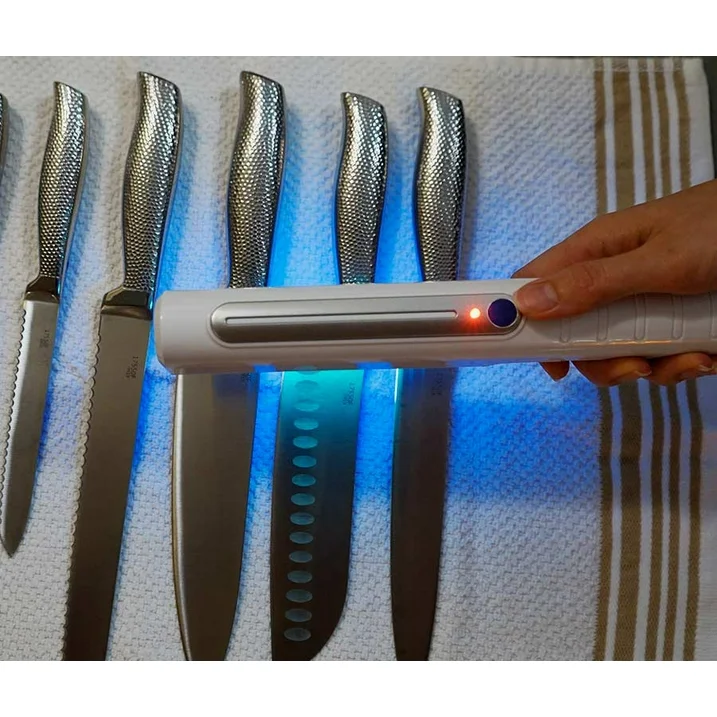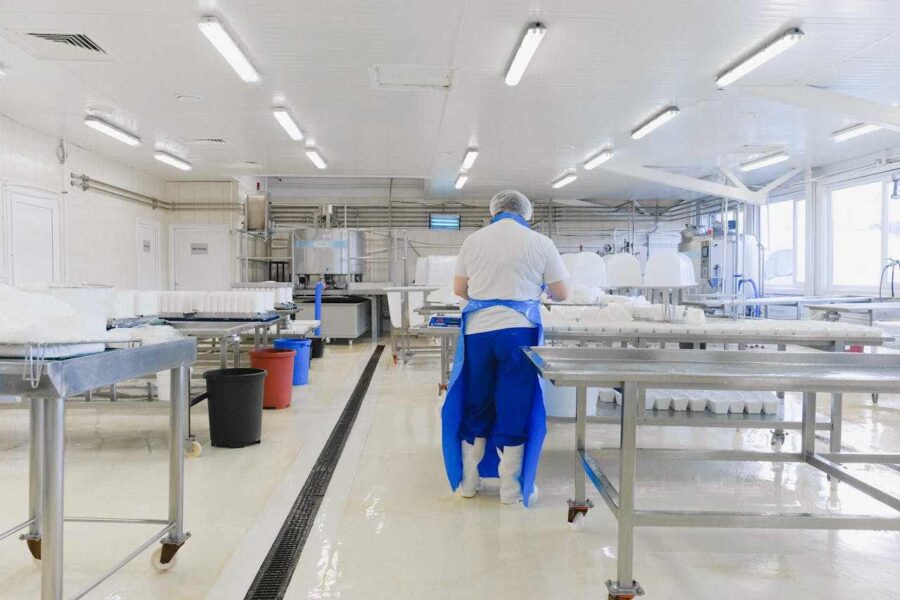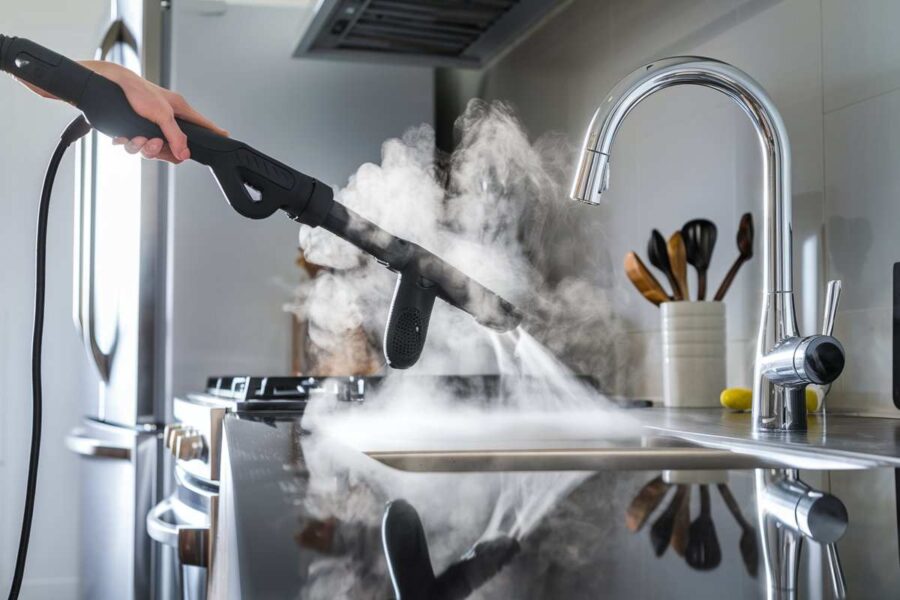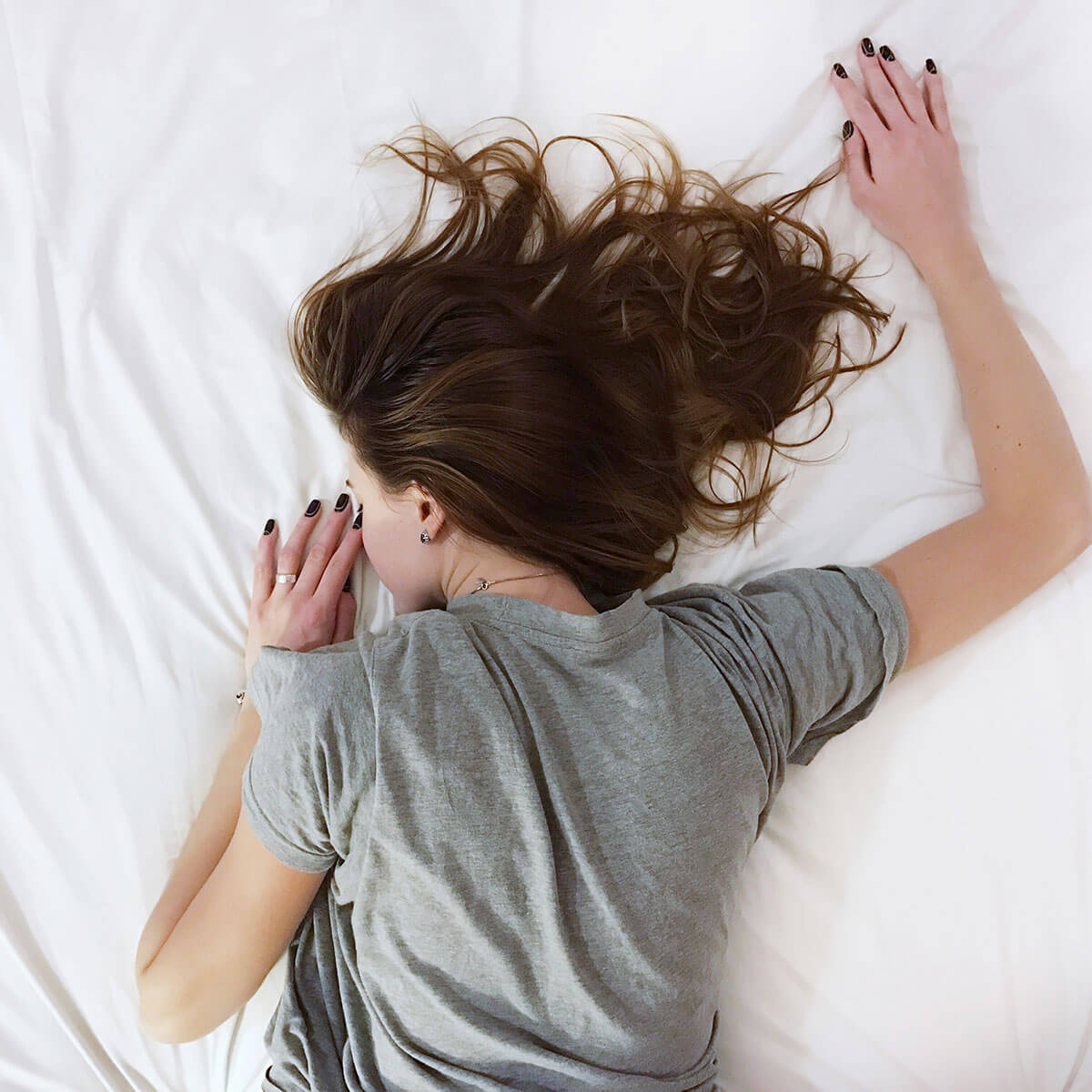How to Sanitize Kitchen Utensils: A Quick Guide
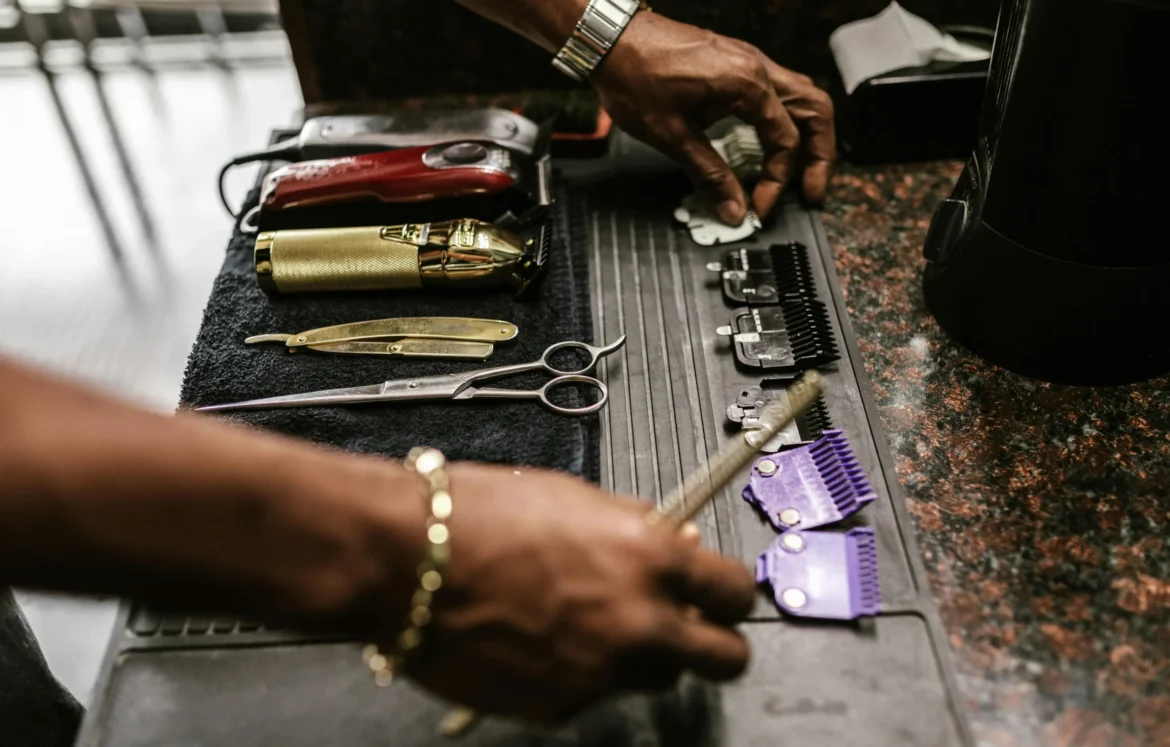
Have you ever stopped to think about the invisible world of germs lurking on your kitchen surfaces? You might meticulously wipe down your countertops, but are you really eliminating all the nasties? If you are not sure, this guide will teach how to properly sanitize kitchen utensils?
Table of Contents:
Sterilization isn’t just for hospitals or laboratories, it’s crucial for maintaining a hygienic kitchen and ensuring the safety of your food. That’s where the magic of UV light comes in. UV sterilizer machines are becoming increasingly popular, and for good reason. They use ultraviolet light to zap those pesky microbes, leaving your instruments, dishes, and even food, squeaky clean.
But before you start blasting your kitchen with UV light, it’s essential to understand the ins and outs of this powerful sterilization technique. This comprehensive guide will take you on a journey from the basics of sterilization to mastering the art of keeping your kitchen a germ-free zone.
Why Kitchen Utensils Sterilization Matters?
Let’s dive right into the heart of the matter: why is sterilization so important? Well, imagine your kitchen as a battleground, with you as the commander, fighting against an army of unseen enemies – bacteria, viruses, and fungi. These microscopic invaders can cause food poisoning, infections, and even allergic reactions.
Can you eat food exposed to UV light? It’s a common question, and the answer is a resounding yes! UV light is a safe and effective way to sterilize food, removing harmful bacteria and viruses without leaving behind any harmful residues. In fact, UV light is already used in many food processing plants and restaurants to ensure food safety. Kitchen UV light devices are a great way to take control of your food hygiene and ensure you are eating with confidence.
UV light sanitizers are particularly effective for sterilizing kitchen tools, especially those used for preparing raw meat, poultry, and seafood. These tools often harbor bacteria that can easily cross-contaminate other foods. Using a UV sanitizer for your knives, cutting boards, and other instruments will help to prevent the spread of these harmful bacteria.
But UV light isn’t just for tools; it can also be used to sterilize kitchen appliances. Many modern appliances are equipped with UV sterilizer machines for added hygiene. For example, kitchen appliance with UV sterilizer like UV sanitizer dishwasher and UV kitchen hood are becoming increasingly popular in homes.
In the next section, we’ll delve into the nitty-gritty of prepping your instruments for sterilization. So, gear up, because we’re about to embark on a journey to a perfectly clean kitchen!
The UV-tizer is a portable and lightweight UVC light sanitizer wand that can destroy 99.9% of all airborne viruses and bacteria.
Including the seasonal flu, colds, salmonella, chickenpox, and many more through advanced ultraviolet (UVC) technology.
Getting Ready to Sterilize your Kitchen Utensils
Before you start sterilizing your kitchen instruments, it’s important to get everything ready. Here’s a quick checklist to ensure a smooth and effective process:
- Gather your supplies: You’ll need the right tools for the job! This includes your chosen sterilization method (like a UV sterilizer machine for hospital or boiling water), a clean workspace, and appropriate cleaning agents.
- Clean and pre-wash: Give your instruments a thorough wash with soap and water to remove any visible dirt or debris. This step helps to remove the majority of bacteria and other contaminants, making the sterilization process more efficient.
- Inspect for damage: Take a moment to inspect your instruments for any cracks, chips, or damage. Any compromised instruments should be replaced or repaired before sterilization.
- Choose the appropriate sterilization method: The best sterilization method will depend on the type of instruments you’re working with. For example, if you’re sterilizing delicate instruments like kitchen knives or kitchen utensils, you might opt for UV kitchen hood or a specialized sterilizer. But, if you’re cleaning larger pieces like kitchen cutting boards, a uv sanitizer dishwasher might be a better choice.
- Prepare the sterilization area: Choose a clean and well-ventilated area to carry out your sterilization process. Make sure your workspace is free from clutter, and you have access to fresh water and cleaning supplies.
Remember: Always refer to the manufacturer’s instructions for your chosen sterilization method to ensure proper use and safety. This will help you achieve optimal results and ensure the longevity of your instruments.
Can you eat food exposed to UV light? It’s a common question, and the answer is a bit complex. While UV light is effective at killing bacteria on surfaces, it doesn’t necessarily make food safe to eat. You should always follow proper food safety guidelines to prevent contamination. Learn more about UV sanitizing boxes for kitchens to understand how they can be used safely.
The Sterilization Process: Choosing the Right Method
Now that you’re ready to sterilize your instruments, let’s dive into the methods you can choose from. There’s no one-size-fits-all solution, so understanding each method’s advantages and limitations is key.
1. UV Sterilization: A Powerful and Efficient Option
One of the most popular methods for sterilizing instruments is using UV light. UV sanitizing boxes, portable UV lamps, and even UV sterilizers for kitchens are widely available. UV light, specifically UV-C, is known for its effectiveness in killing bacteria, viruses, and other microorganisms. This makes it a valuable tool for sterilizing kitchen utensils, baby bottles, and even kitchen appliances.
How does UV sterilization work? UV-C light disrupts the DNA of microorganisms, preventing them from replicating and causing harm. This method is highly effective and doesn’t require harsh chemicals, making it an environmentally friendly option.
But there are a few things to keep in mind:
- Can you eat food exposed to UV light? While UV light is effective for sterilizing surfaces, it’s not recommended for directly treating food. The UV light can alter the taste and texture of some foods.
- UV light can also damage materials: Avoid exposing delicate fabrics, plastics, or certain types of wood to UV light for prolonged periods.
3. Heat Sterilization: Reliable and Widely Available
Another common method is heat sterilization, often used for medical instruments. This involves using high temperatures to kill bacteria and viruses. There are several heat sterilization methods, each with its own advantages and disadvantages:
- Boiling: A simple and effective method for sterilizing small instruments.
- Autoclaving: A more powerful method that uses steam under pressure to kill even the most resistant microorganisms.
- Dry heat sterilization: This method uses an oven to kill microorganisms through dry heat.
3. Chemical Sterilization: A Versatile Approach
Chemical sterilization is also used for a variety of instruments. It involves using chemicals like bleach, alcohol, or other disinfectants to kill microorganisms. This method can be effective but requires careful attention to safety guidelines. It’s important to follow the manufacturer’s instructions for diluting and using the chemicals.
Maintaining Cleanliness: Keeping Your Instruments Sterile
Once you’ve sterilized your instruments, it’s crucial to maintain their cleanliness and prevent recontamination. Here’s how:
1. Storage Matters:
- Clean and Dry: Always store sterilized instruments in a clean, dry environment. This helps to prevent the growth of bacteria and other microorganisms.
- Sealed Containers: If possible, use sealed containers or wraps to keep instruments protected from dust and airborne contaminants.
- UV Sanitizer: Consider using a UV sanitizing box for storage. These boxes use UV-C light to kill germs on surfaces, ensuring your instruments remain sterile for an extended period.
2. Handling with Care:
- Clean Hands: Always wash your hands thoroughly before handling sterilized instruments.
- Sterile Gloves: Wear sterile gloves when working with instruments to prevent contamination from your hands.
- Minimize Touch: Minimize touching the sterilized surfaces to reduce the risk of introducing bacteria.
3. Regular Cleaning:
- Frequent Checks: Regularly inspect instruments for signs of contamination or damage.
- Re-Sterilize When Necessary: Re-sterilize instruments if they come into contact with non-sterile surfaces or if they’ve been exposed to potentially contaminated environments.
4. Understanding UV Sanitization:
UV-C light, the type used in UV sanitizers, is highly effective at killing bacteria, viruses, and molds. It works by damaging their DNA, preventing them from replicating. While UV sterilizers are commonly used in hospitals and dental offices, they are becoming increasingly popular in the home, too.
5. UV Sanitization in the Kitchen:
UV-C light has various applications in the kitchen. You can find UV sanitizers for kitchen appliances like:
- UV sanitizer for cutting boards, knives, and utensils.
- UV sterilizers for baby bottles and pacifiers.
- UV sterilizers for fruits and vegetables to eliminate surface bacteria.
- UV kitchen hoods that capture and kill airborne particles.
It’s important to note that you cannot eat food that’s been exposed to UV light. UV light, especially UV-C light, can cause damage to food, making it unsuitable for consumption. Always follow the manufacturer’s instructions for using your UV sanitizer and never expose food directly to UV light.
Common Mistakes to Avoid: Ensuring Successful Sterilization
You’ve taken the time to understand the basics of sterilization and you’re ready to start keeping your instruments clean. But even with all the information you’ve learned, there are still some common mistakes that can sabotage your efforts.
Not cleaning before sterilizing: While sterilization kills microbes, it doesn’t remove dirt or debris. That’s why it’s crucial to give your instruments a thorough cleaning before sterilizing. You can even use a specialized UV sanitizer dishwasher to sanitize your dishes while removing grime and food particles simultaneously.
Not sterilizing for the right amount of time: Every sterilization method has its own recommended exposure time. Don’t cut corners, as insufficient time can lead to incomplete sterilization.
Not using the correct sterilization method: Choosing the right method depends on the instruments you need to sterilize. Don’t assume that all instruments require the same treatment. For instance, kitchen appliance with uv sterilizer offer a convenient way to disinfect your knives, chopping boards, and other kitchen tools without harsh chemicals.
Not storing sterilized instruments properly: Even a perfectly sterilized instrument can become contaminated if it’s not stored correctly. Make sure to store your instruments in a clean, dry environment, and avoid touching them with your bare hands.
Not regularly maintaining your sterilization equipment: Just like any other piece of equipment, your sterilizer needs regular maintenance to ensure it’s working properly. Follow the manufacturer’s instructions for cleaning and replacing parts, and don’t hesitate to contact a professional if you have any concerns.
Conclusion: Empowering Your Cleanliness Journey
Sterilization is an essential part of maintaining a clean and safe environment, especially in your kitchen. By understanding the basics, choosing the right method, and avoiding common mistakes, you can ensure that your instruments are properly sterilized and ready to use. From kitchen UV light sanitizing appliances to UV sanitizer work solutions for your food preparation area, there are options to suit every need.
Remember, a sterilized environment is not just about killing germs; it’s about safeguarding your health and peace of mind. Embrace the power of sterilization, and enjoy the confidence that comes with knowing you’re using clean and safe instruments.


